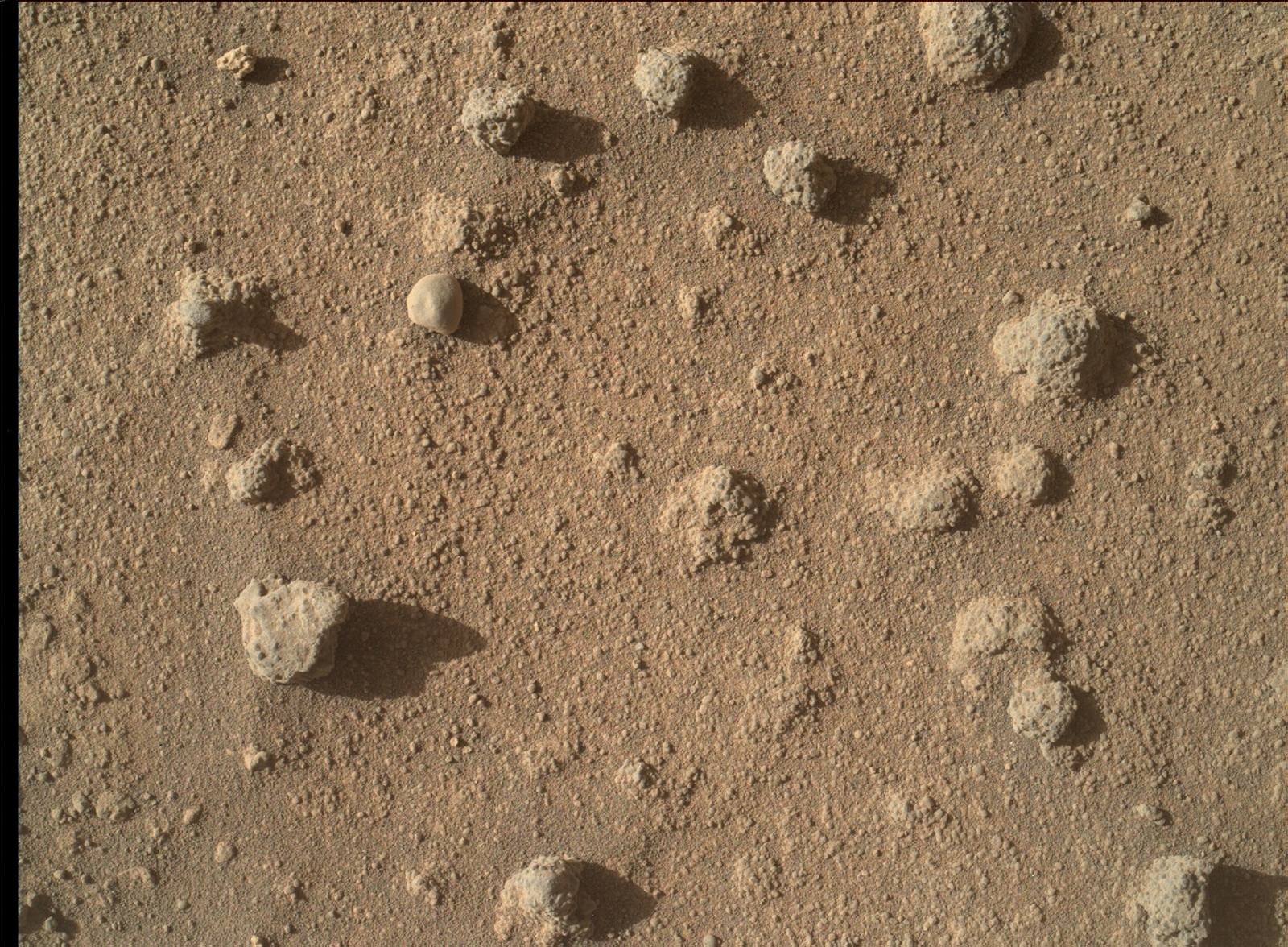Nodules of Cemented Sand Grains Within Martian Sandstone

| Credit | NASA/JPL-Caltech/MSSS |
|---|---|
| Language |
|
This view shows nodules exposed in sandstone that is part of the Stimson geological unit on Mount Sharp, Mars. The nodules can be seen to consist of grains of sand cemented together.
The Mars Hands Lens Imager (MAHLI) camera at the end of the robotic arm on NASA's Curiosity Mars rover took this close-up image on March 10, 2016, during the 1,277th Martian day, or sol, of the rover's work on Mars. The view covers a portion of the foreground of a scene (http://mars.nasa.gov/multimedia/images/?ImageID=7749) recorded by Curiosity's Mast Camera (Mastcam) the preceding day.
The nodules are about the size of garbanzo beans. Researchers are using Curiosity to investigate what the composition and texture may disclose about an ancient wet environment in which fluids may have circulated through the rock and cemented these nodules together more strongly than the surrounding sandstone.
MAHLI was built by Malin Space Science Systems, San Diego. NASA's Jet Propulsion Laboratory, a division of the California Institute of Technology in Pasadena, manages the Mars Science Laboratory Project for the NASA Science Mission Directorate, Washington. JPL designed and built the project's Curiosity rover.
More information about Curiosity is online at http://www.nasa.gov/msl and http://mars.nasa.gov/msl/.

